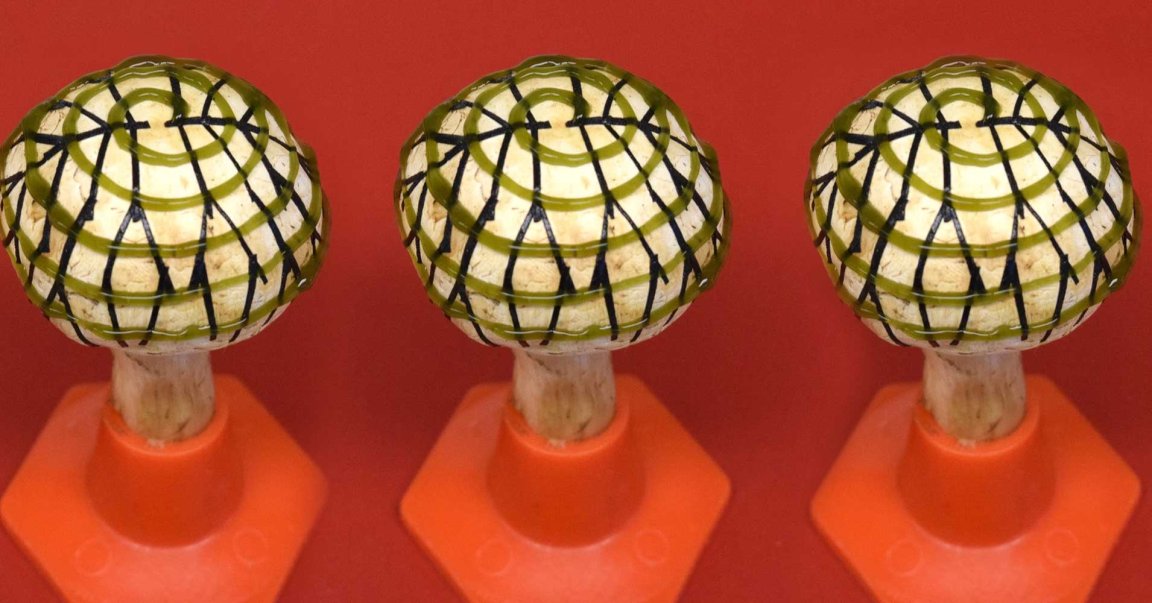
Nature Is Metal
Researchers looking for new forms of renewable energy have long been interested in cyanobacteria, which are tiny microorganisms that naturally transform sunlight into electricity.
The problem has been keeping cyanobacteria alive long enough to do something with the electricity they produce — they tend to die quickly on artificial surfaces.
In the hunt for a better hosting surface for cyanobacteria, researchers from the Stevens Institute of Technology (SIT) landed on mushrooms — after all, they’re home to other types of microorganisms — plus 3D–printed nanomaterials. The result: “bionic mushrooms.”
Feels Like Home
The SIT researchers describe how they created their bionic mushrooms in a study published Wednesday in the journal Nano Letters.
First, they used a 3D printer to print an electronic ink packed with graphene nanoribbons onto the cap of a white button mushroom in a branched pattern. Then, they 3D printed a bio ink containing the cyanobacteria on top of that in a spiral pattern.
Finally, they shone a light on the mushroom to activate photosynthesis in the cyanobacteria. Wherever the two inks intersected, the graphene nanoribbons collected the current produced by the cyanobacteria.
The team found that the mushroom-hosted cyanobacteria lived for several days longer than those on the control materials, which were a silicone mushroom and a mushroom the researchers killed with vinegar.
Fundamental Fungus
While the researchers couldn’t actually do anything with their bionic mushrooms — the power they generated was minimal — they do believe the fungi serve as an important stepping stone along the path to useful bionic cyanobacteria systems.
“With this work, we can imagine enormous opportunities for next-generation bio-hybrid applications,” said researcher Manu Mannoor in a press release. “For example, some bacteria can glow, while others sense toxins or produce fuel. By seamlessly integrating these microbes with nanomaterials, we could potentially realize many other amazing designer bio-hybrids for the environment, defense, healthcare, and many other fields.”
READ MORE: “Bionic Mushrooms” Fuse Nanotech, Bacteria and Fungi [Stevens Institute of Technology]
More on cyanobacteria: Want to Breathe on Mars? A Sea-Dwelling Bacteria Could Make That Possible.